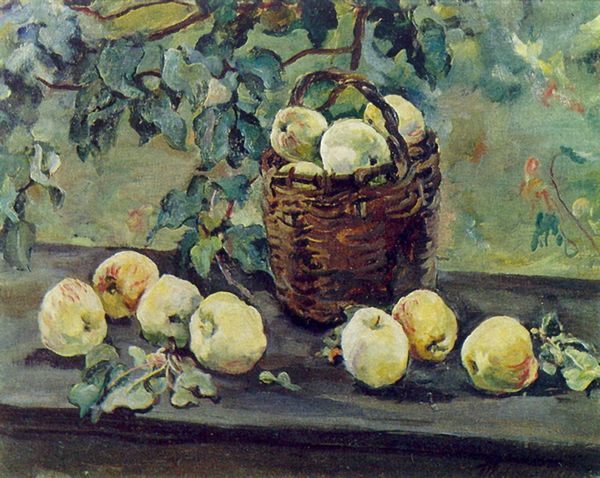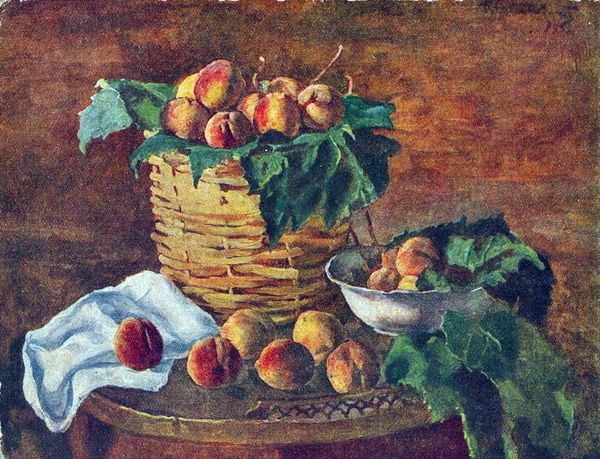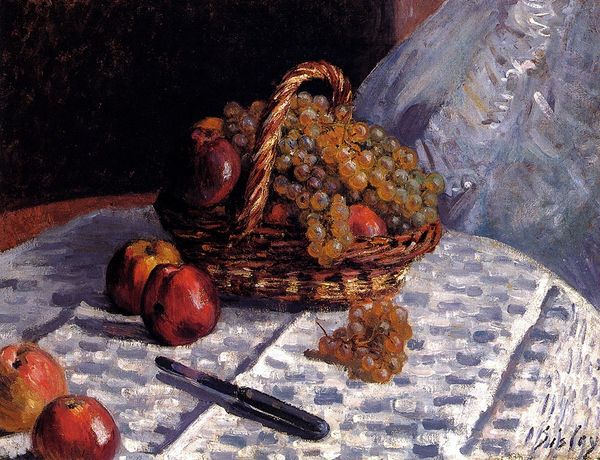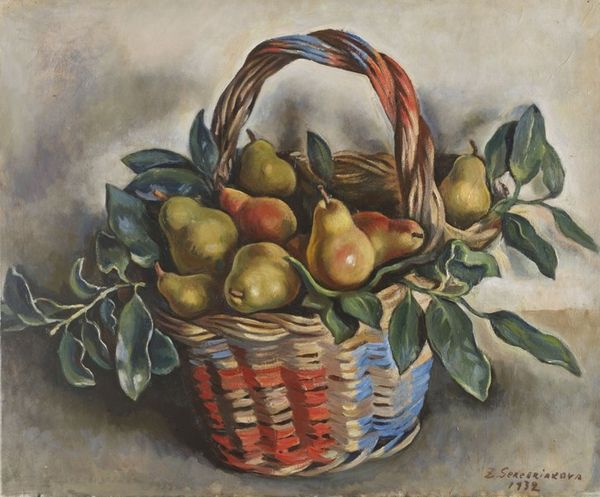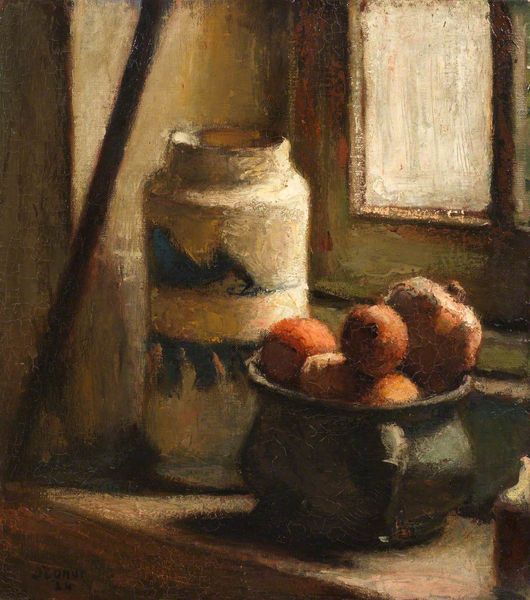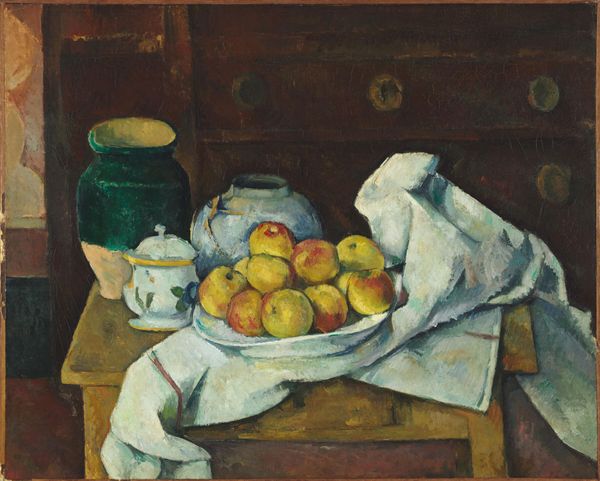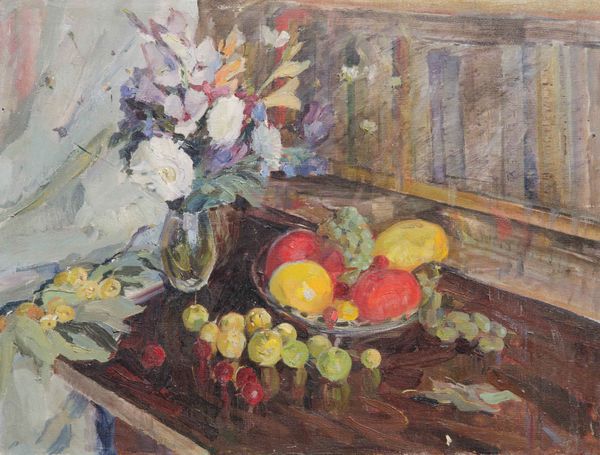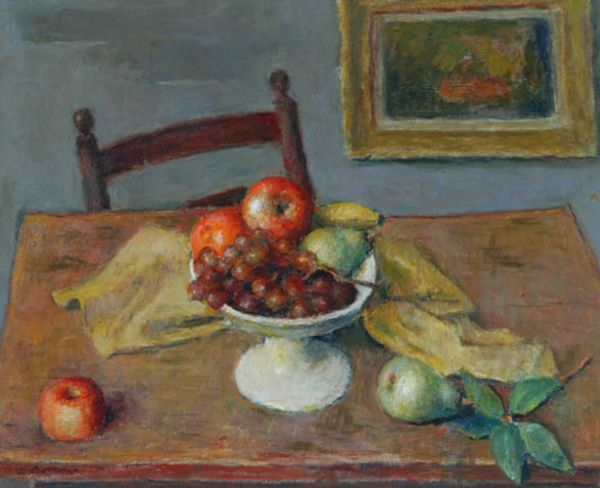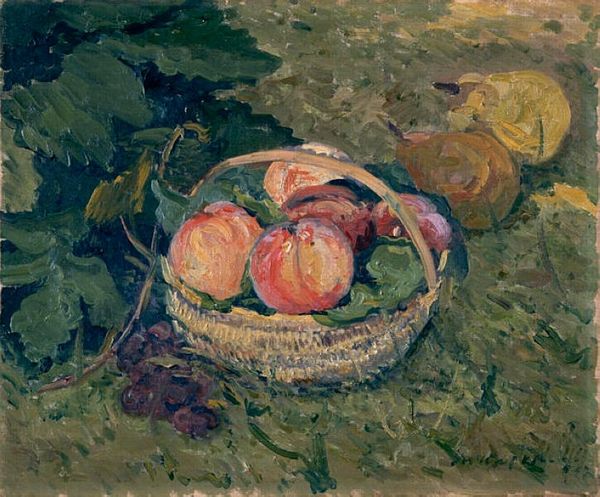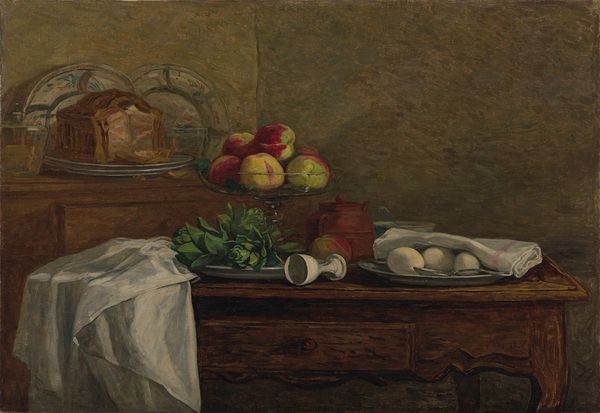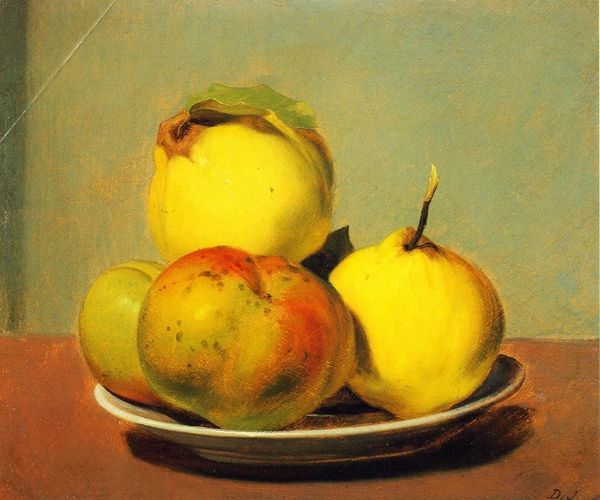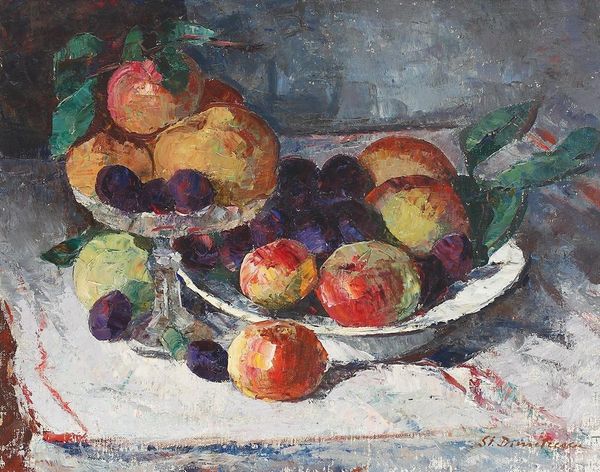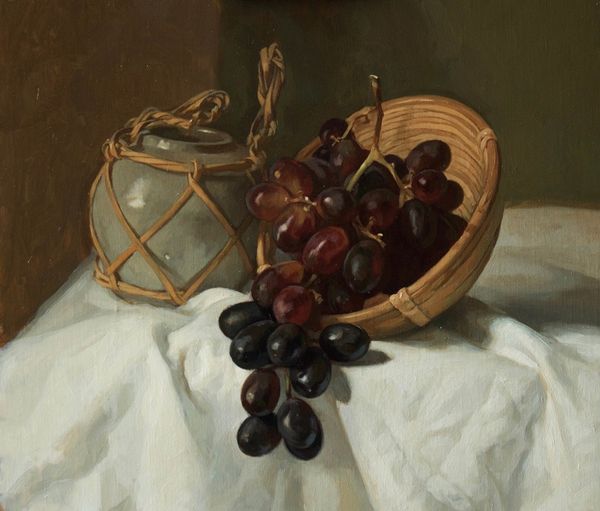
Dimensions: 55.8 x 46.2 cm
Copyright: Public domain
Editor: This is "Apples and Pears in a Round Basket" by Camille Pissarro, painted in 1872. It’s an oil painting and depicts, quite literally, a basket overflowing with fruit. It strikes me as simple, domestic, even comforting. What's your interpretation of it? Curator: I find myself drawn to the materiality of this seemingly simple still life. Look closely at the way Pissarro renders the basket. We're seeing the effects of labor, the craft of weaving transforming raw materials into a functional object, and how he equates it with the artistic labor involved in creating the painting itself. Editor: So you see the basket itself as being equally, if not more, important than the fruit within it? Curator: The fruit, while visually appealing, are objects of consumption, readily available commodities in the burgeoning market economy of 19th-century France. Pissarro directs our gaze instead to the humble basket, a handmade object with a palpable history of its own production, that challenges any division between fine art and the applied arts. Do you notice anything in his application of the paint itself? Editor: The brushstrokes seem quite visible, not smoothed over. Curator: Exactly! It disrupts the illusion, drawing attention to the labor and process that constitutes painting. He's not simply representing fruit; he's calling attention to the materiality of painting itself, and the work behind everyday objects that we might often overlook. Editor: That's a fascinating perspective. I hadn't considered the basket beyond its function as a container. Curator: Pissarro does invite us to consider labor and the value of the handmade, shifting our attention from passive consumption to the act of creation. Editor: I’ll certainly look at still lifes differently from now on. I realize it is not just about what is being presented, but also about what is required to create what we see.
Comments
No comments
Be the first to comment and join the conversation on the ultimate creative platform.
